THE STAR OF FLASH GORDON SHARES SET STORIES AND HIS 20/20 HINDSIGHT OF THE BIG-BUDGET, 1980 CULT FAVORITE ON THE ANNIVERSARY OF ITS RELEASE.
By David Weiner
STAR WARS may have changed the landscape of big-budget Sci-Fi in 1977, but when FLASH GORDON arrived in theaters three years later in December of 1980, it was truly an anomaly.
A polarizing film to this day in terms of true-fan fervor vs. pop perceptions, the film almost defied categorization at the time of its release with its pop-art sensibilities, brightly colored sets and costumes, borderline kink, and rockin’ soundtrack by Queen — a radical choice in its rejection of a classical symphonic score from the likes of John Williams or Jerry Goldsmith.

Reflecting on the film that made him a star more than three decades ago, Sam J. Jones is candid about his unique central perspective: “It’s very hard for me to be objective,” he says of the movie he labored on decades ago. “I’m very difficulton myself. I guess to summarize it in a nutshell, I was pretty proud of the work I did, considering what we had to deal with at the time on a very, very fast pace.”
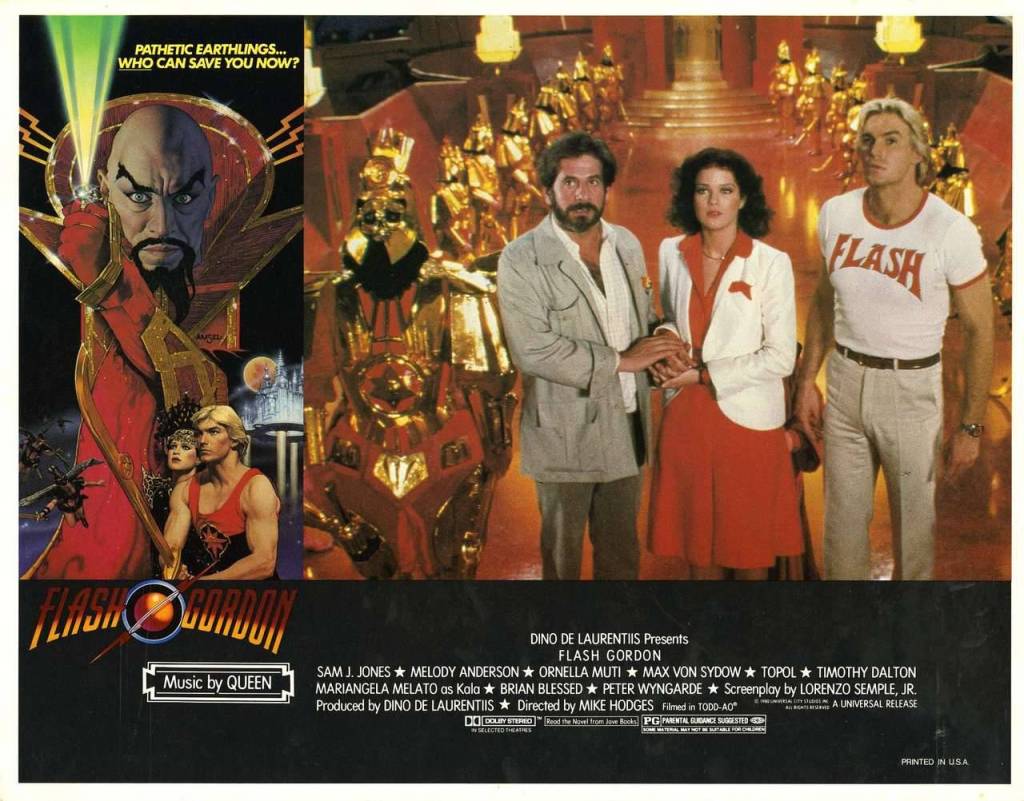
It’s the stuff of fluff and fantastic fun: FLASH GORDON follows the title character, a quarterback for the New York Jets, and his companions Dale Arden (played by Melody Anderson) and Dr. Hanz Zarkov (played by Topol) as they blast off to the distant world of Mongo to confront the malevolent Emperor Ming the Merciless (Max von Sydow) before he annihilates Earth on a whim. Once there, they team up with the kingdom’s antagonistic satellite rulers, Prince Barin (a pre-007 Timothy Dalton) and Prince Vultan (Brian Blessed), to take down Ming.
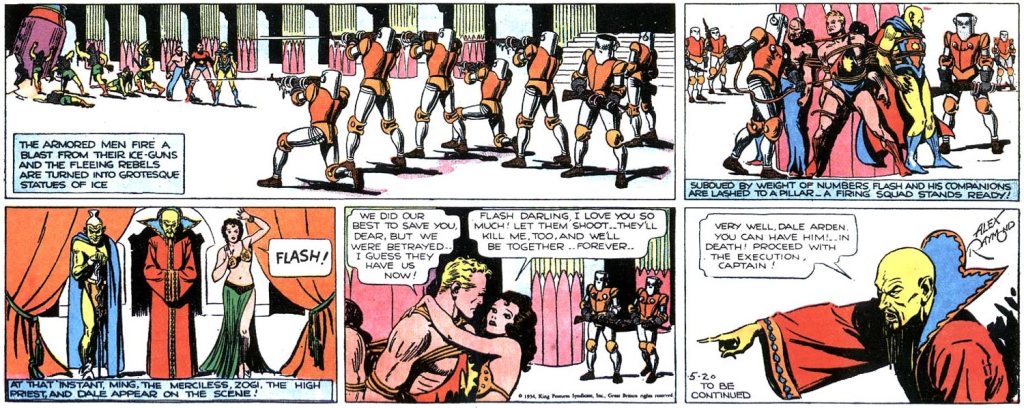
Based on the comic adventure strip created by Alex Raymond that was first published in 1934 for King Features Syndicate, FLASH GORDON was designed to be an answer to the already popular BUCK ROGERS IN THE 25TH CENTURY. The concept took off like a rocket, and within two years the character was on the silver screen starring Olympic champ and former TARZAN star Buster Crabbe as the intrepid Flash for a number of cliffhanger serials.

The title also found its way to television in the ‘50s and the late ‘70s as a Filmation animated series (and then in the early ‘80s by Filmation as a one-time TV movie). The character also appeared in the mid-‘80s in the animated DEFENDERS OF THE EARTH, and was rebooted for live-action with a short-lived SyFy show in the ‘90s (when the network was still spelled Sci-Fi).
CASTING FROM THE DATING GAME
“[Producer] Dino De Laurentiis hired me because he saw the character [in me]; he saw the similarities with me and Buster Crabbe, the original Flash,” says Jones. “If you take a photo of Buster Crabbe at the age of 25 years old, and you take a photo of me at the age of 25, we really look like brothers. So I know the similarities of the physical look, casting-wise, was there. That had something to do with it.”
Before FLASH, the world saw Jones briefly in Blake Edwards’ romantic comedy 10 with Dudley Moore and Bo Derek, and he had small roles in the CBS pilot CO-ED FEVER and ABC’s STUNTS UNLIMITED. But it was a magnetic appearance on a late-night spoof of THE DATING GAME that caught the eye of none other than Dino’s mother-in-law. Watching the 6’3, 200-pound, former Marine Corps football player positioned
as “the perfect catch” prompted her to call her son and proclaim, “Hey! Your Flash Gordon is on THE DATING GAME!”
The rest is history. “This was an eight or nine-month auditioning process,” explains Jones. “I really didn’t get the script until I was told by Dino, ‘Okay, you got the part.’” Upon his first read of BATMAN ’66 TV writer Lorenzo Semple, Jr.’s screenplay, Jones recalls, “I looked at it and thought, ‘This is going to be a lot of fun. Wow! Fun, adventure, excitement. Flash Gordon is a bit naive on certain things, but [the script is] very camp, and [even more so] just an unpredictable adventure.’ I had high expectations.”
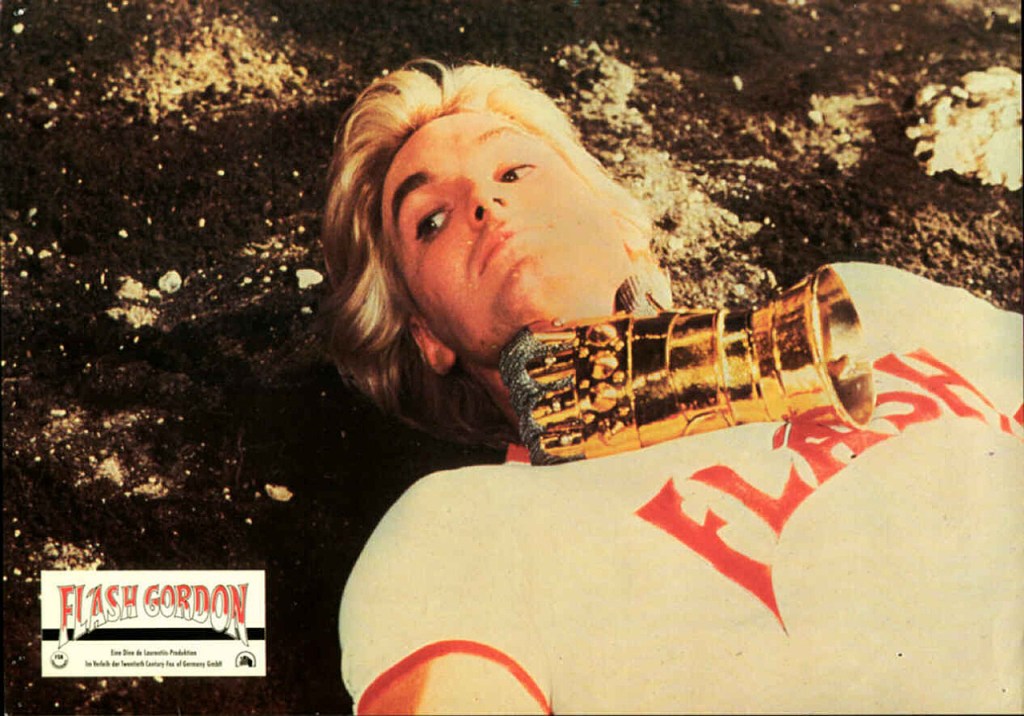
Of course, FLASH GORDON was a pop-culture phenomenon decades before Jones was born, and its reach and influence continued with the generation that grew up with the character. It’s well known that George Lucas first wanted to make his own adaptation of FLASH for the big screen, and “fell back” on his own STAR WARS tale only after he was unable to secure the rights to the character.
“As a kid I would collect FLASH GORDON comic books, Superman, Batman,” recalls Jones. “When I was put through the auditioning process, I started doing a little bit of research and I said, ‘Hey, this guy is kinda cool!’ I didn’t realize at the time that he was one of the very few superheroes who does not have superpowers. Basically, he had to rely on his athleticism and his wit. I thought, ‘Okay, this gives it a different twist and a different dynamic.’ And I knew at the time, 25 years old, I couldn’t be anybody else other than who I am, so I also gave the part pieces of me.”
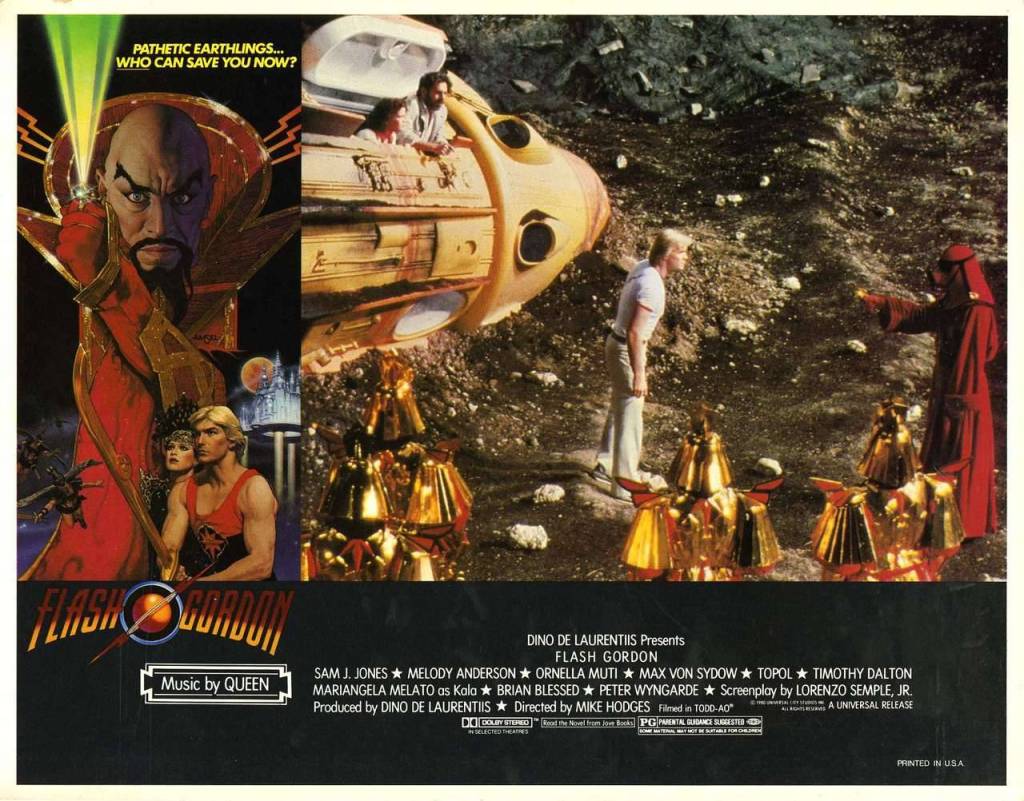
A BIG-BUDGET SHOOT WITH A LANGUAGE BARRIER
Once the approximately five-month production began filming at Shepperton and Elstree Studios in England, Jones put his head down and performed like a heavy workhorse. “This project was much bigger than me,” he says. “I could not be distracted by anything. I had to focus on my job at hand, and my job at hand was to study my scenes the night before, be completely prepared, get plenty of rest, and show up to work on time and add value to what the directors and producers were doing.”
In fact, shouldering the production as an unknown was so demanding that Jones felt like he couldn’t fully enjoy the experience. “I was thrown from a scene to a rehearsal to a set to a blocking rehearsal to rehearsing stunts,” he says. “Even when I wasn’t at the studio, I was at home or the hotel working out, I was training, I was studying, learning how to use a bullwhip with a bullwhip artist, everything. It just never stopped for me. So now, as I sit back in some of these FLASH GORDON screenings that I visit, and I’ve only seen a few, I’m discovering things for the first time, and it’s quite remarkable.”
The FLASH crew was a potent mixture of different cultures, with the local Brits blending with a number of Italian craftsmen imported by producer Dino, most of whom spoke little or no English. “Melody and I were the only two Americans,” says Jones. “And we didn’t speak Italian, so there was a lot of eye contact and body language.” The shooting script was tight and the production schedule even tighter, so there was no time to expand and experiment with successive takes.
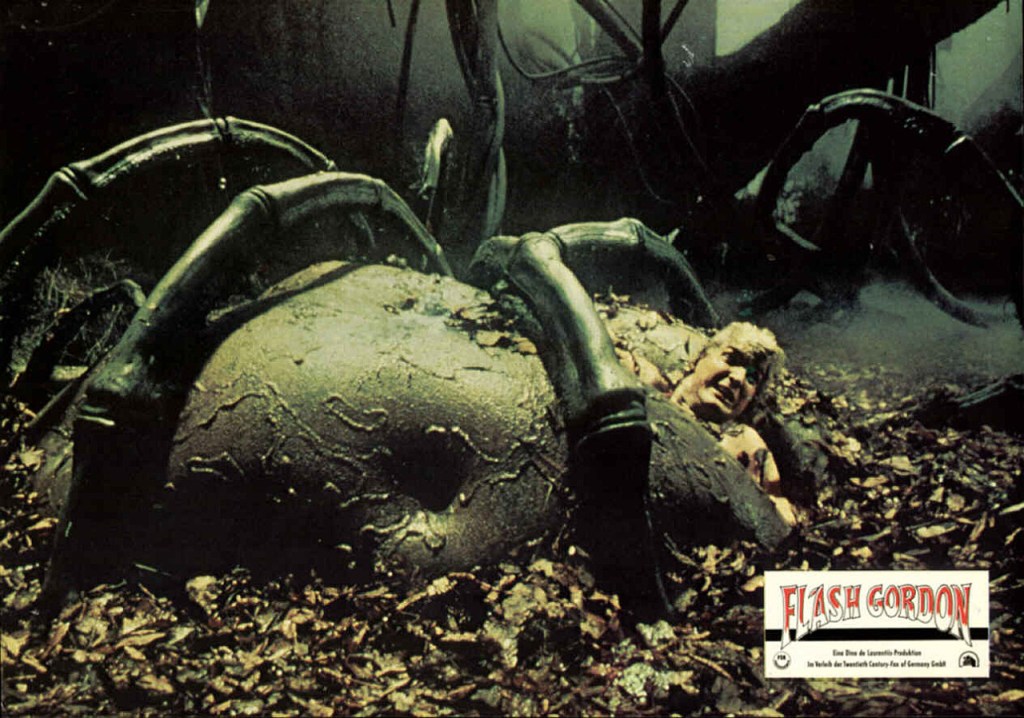
Still, says Jones, “There was room for subtleties. I remember, especially the intimate scene with Ornella [Muti, who played the alluring Princess Aura], and the funny stuff with Melody, we were given freedom. But remember, this was a huge budget at the time. Thirty-five million dollars in 1979 could be equivalent of $300 million nowadays. Michael Hodges, our director, was very good considering what he had to work with. He came in at the last second. Nicolas Roeg was the hired director who spent probably well over a year in development and in pre-production. He left three weeks before filming, and Michael Hodges came in, so Michael’s plate was very, very full. As actors, we really had to press in and really assist Michael since this was sort of a brand new baby for him.”
Every film production has its unforeseen challenges, and Jones points out that wet paint became a force to be reckoned with on the FLASH set. “Everything was visually so beautiful with the reds and the golds and the silvers; a lot of that were paints. The floors and the walls were fresh paint [from] days or weeks earlier. So every time I’m wearing a white shirt, the T-shirt that says FLASH, and I’m rolling around on the floor or on the rotating disc, we’re talking about, ‘Okay, now my shirt has silver paint on it, now it’s got red paint!’ So yeah, it could be problematic,” he says with a laugh.
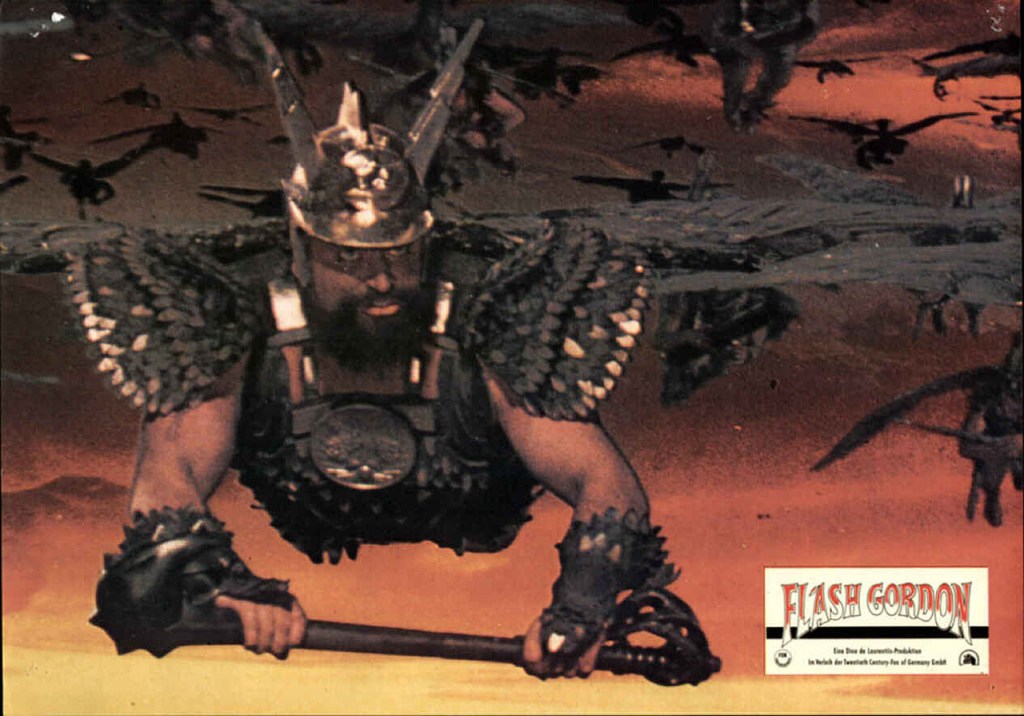
Jones had a lot of appreciation for his winged counterparts on the film, as the actors who portrayed the Hawkmen had to endure long hours in uncomfortable harnesses: “My god, they had them up in the air for hours,” marvels Jones. “If you know anything about that, your body is under tremendous pressure to be hanging. I guess it would be okay if you were hanging head straight up and feet straight down, but in that prone position like that, I think it takes a lot of out you. They couldn’t keep bringing them up there and bringing them down there, up and down, up and down, because they had to keep getting the shots. But they were all troopers.”
One particular moment to look for in thefilmis how Jones climbs the rope when he’s on Prince Barin’s planet of Arboria. If it seems the slightest bit off, it’s because of a cinematic trick. “I had to climb the rope over and over and over again,” he recalls. “I don’t care if you’re a professional rope climber, after the 15th time there’s nothing left. You have complete muscle failure. But you can’t just say, ‘Okay guys, let’s take a break now,’ with 200 people right there in front of you. No, you gotta go! So I think it was Michael, the director — when I couldn’t climb the rope anymore to make it look smooth, he said, ‘Okay, Sam, just come down the rope and we’ll roll the film in reverse.’ And I said, ‘Man, that’s really cool, let’s do that!’ So it worked.”
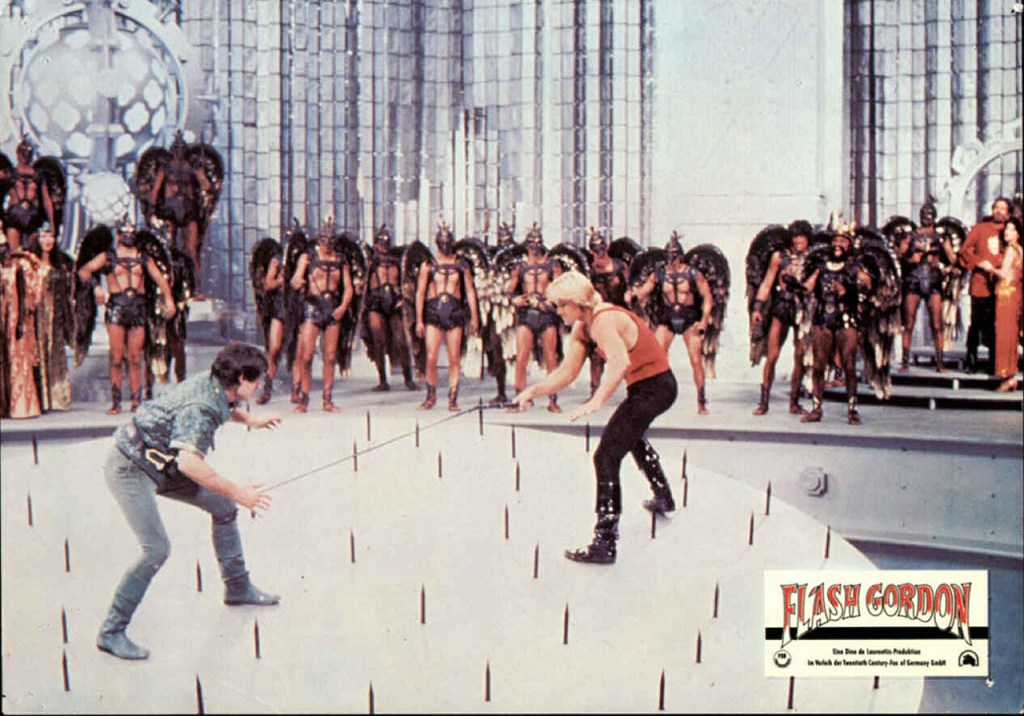
Flash’s memorable fight against Dalton’s Prince Barin on the Hawkmen turntable of death was also quite a challenge. “Yes, it was a little bit more than 10 feet [above the ground], and surrounding the disc at the bottom, instead of pads or air bags or big pieces of foam, the English would stack gigantic boxes and they would offset the stacks,” explains Jones. “I thought to myself, ‘Are you kidding me?!’ I knew I was going to fall a lot because we had to operate on the edge of the disc. Every time it tilted I knew we’d be falling off. And the stuntman said, ‘Trust me Sam, we’ve been doing this for years.’ And sure enough, the first time I fell into the boxes, just for a split second you thought it felt sharp, and then your body molded into these pieces of cardboard and it would work out perfect.” He adds, “Not getting hit in the face, in the eye, with the bullwhip during the rotating disc fight scene with Timothy was kind of cool; a lot of control there. But sometimes we did whack each other.”
MORE FLASH: BACK ON THE ROCKET CYCLE
When all was said and done and Jones watched the final cut of FLASH GORDON, he wasn’t entirely sure what to make of it. “I sat for the first time watching it, thinking, ‘Wait a minute, am I supposed to laugh at that, or are they being serious? Is it camp? You know, when you look at the special effects you go, ‘Well that’s kind of funny, but are they trying to be funny, or is that the best that they can do with special effects?’ And then you realize you can sit there and dissect it and you can brainstorm as much as you want, when in fact all the viewer has to do is just sit back and have a good time. Visually, it’s exceptional. It’s beautiful with the production quality and the costumes and the sets and all of that. So that’s my recommendation for anybody: Just sit back and enjoy the ride, and try not to conduct brain surgery on it.”
Not one but a number of sequels were originally planned for FLASH GORDON, and Jones confirms, “If I’m not mistaken, there was a six-picture deal.” But tepid domestic box-office ultimately put the brakes on the planned follow-ups. “America was the only country that didn’t really exceed expectations; it was not a big box-office smash in America. But in every other country it was.” Jones then muses about the open-ended possibility of another chance at bat: “You know how sequels go: Sometimes it’s a year later, sometimes three, sometimes 20.”
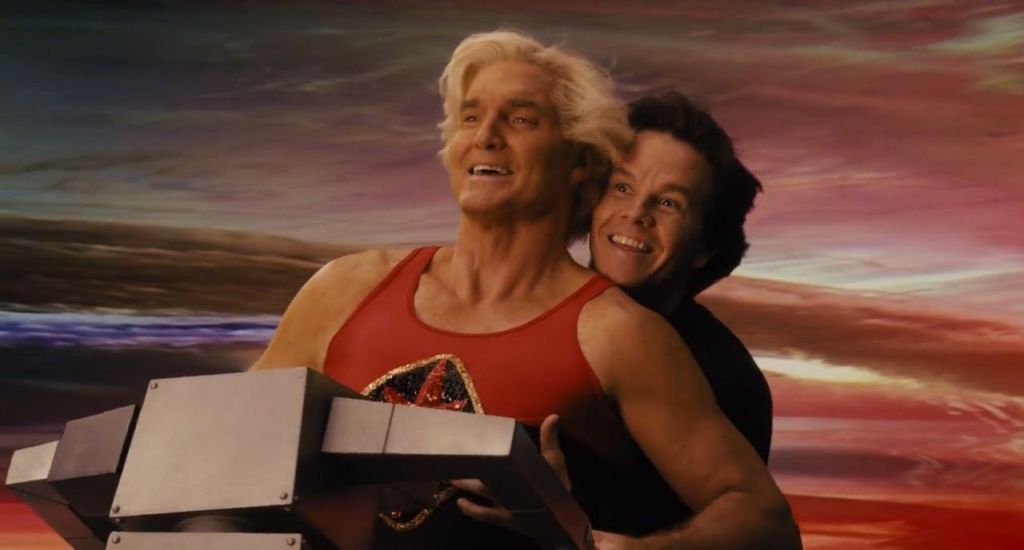
Of course, Jones got the opportunity to return to the character decades later in a way that he never expected: Playing himself, as well as Flash, in the 2012 summer sleeper-hit comedy TED. “Yeah, wasn’t that funny?” chuckles Jones over his extended cameo in which he plays a drug bingeing, brawling version of himself. “Thank god for Seth McFarlane. This is something you can’t make up. When he was eight years old he saw FLASH GORDON, and when he called me there a couple years ago he said, ‘Sam, you and the movie FLASH GORDON changed my life. When I saw you I knew that I wanted to be a productive, creative person in life,’ and he did! He said, ‘I’m doing this movie TED and it has a really strong FLASH GORDON theme to it and I really want to bring you on board.’ And here he is now with his FAMILY GUY, AMERICAN DAD, CLEVELAND SHOW franchise, and now he has the TED franchise.”

Despite a major marketing push at the time of its release, 1980’s FLASH GORDON was never merchandised in a way that spoiled-in-comparison STAR WARS kids had hoped or expected. You can practically count on one hand how many tie-ins were manufactured. Which is why Bif Bang Pow! Toys & Collectibles co-founder Jason Lenzi embarked in creating the FLASH action figures he wanted but never had, in both 7” and 3 3/4” versions. “Oh man, it’s incredible! I think it’s an honor,” says Jones of holding his likeness in the palm of his hand. “And the fans love it. The lines [to get a Bif Bang Pow! FLASH figure signed at Comic-Con] were huge!”
Despite a busy post-FLASH career that included work in film and television, the actor ultimately side-stepped the entertainment industry to run a private security company that he says includes protecting individuals from “kidnappings and assassinations.” As FLASH has only grown in cult status over the years (Jones became the subject of the wonderful Lisa Downs documentary LIFE AFTER FLASH), he has enthusiastically embraced the fact that he’s most often associated with his one-time turn as Flash. “The way it’s evolved, it is what it is, and I’m proud of this,” he states. “I don’t understand actors that are trying to walk away from that so-called image. We owe it to the fans because they pay the money to walk into the theater and pay the money for the ticket. We owe it to the fans who watch us on television because they take the time to do it. They could be watching something else but they decided to engage and watch us. So we owe it to them, to give back to them. These Comic-Con conventions, these personal appearances, the fact that I’ve decided to now play/do a spoof of me and Flash Gordon in the TED franchise, well that’s all fun and that’s all fine, and I enjoy it. And look what’s happened; with the TED franchise, it opened up a whole new age demographic where the fans who did not see FLASH GORDON in the past, because they saw TED, now they’re also watching FLASH GORDON. It’s a win- win situation for everybody.”
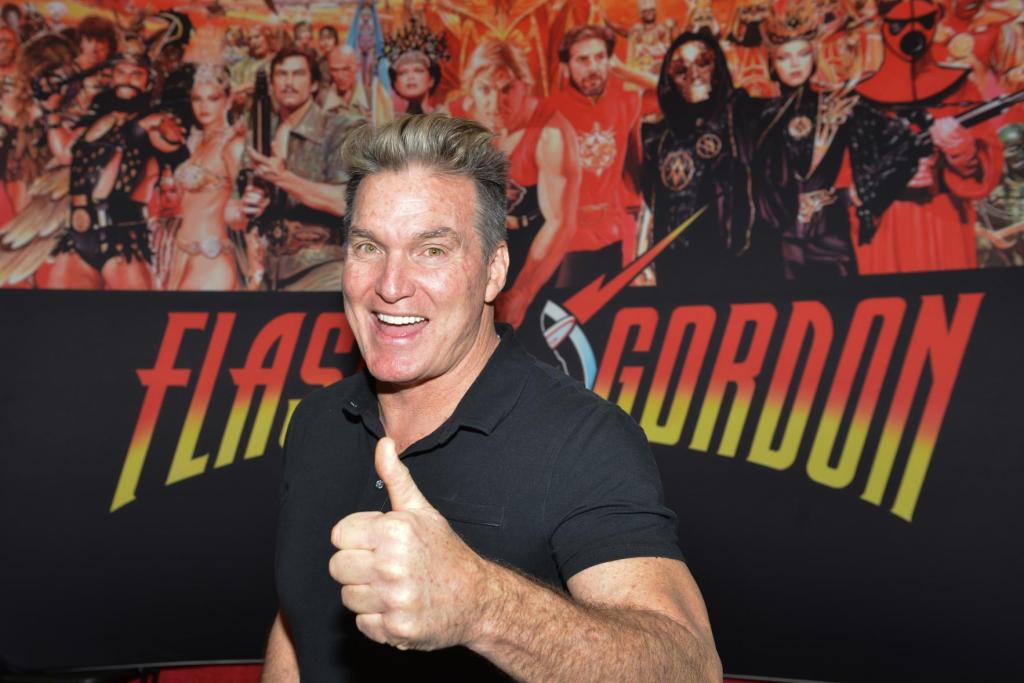
###
(This article first appeared in Famous Monsters of Filmland issue #283 for the film’s 35th anniversary)
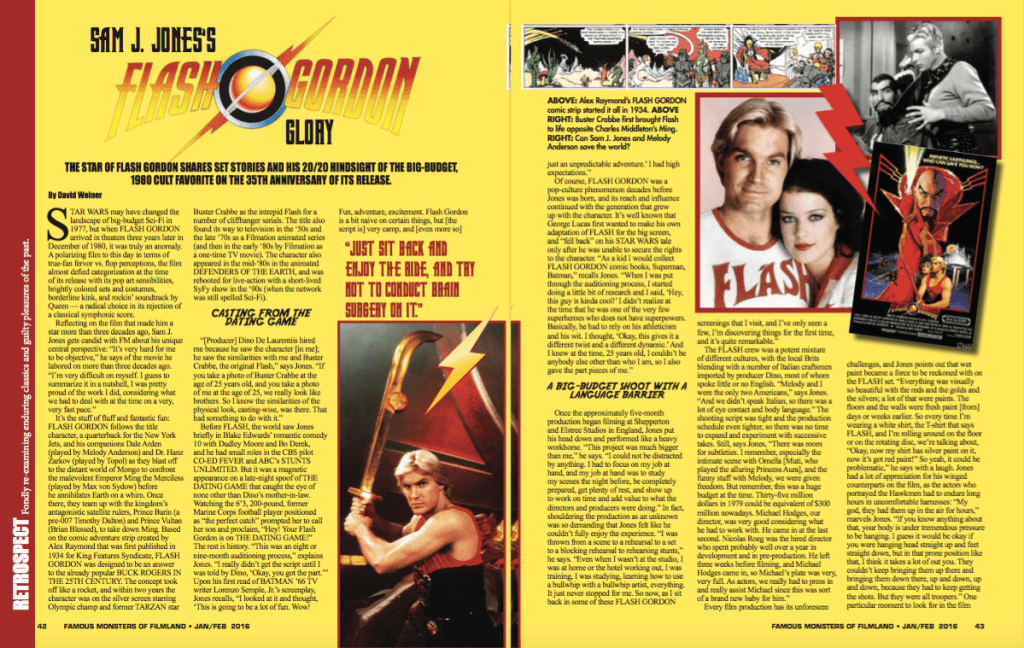
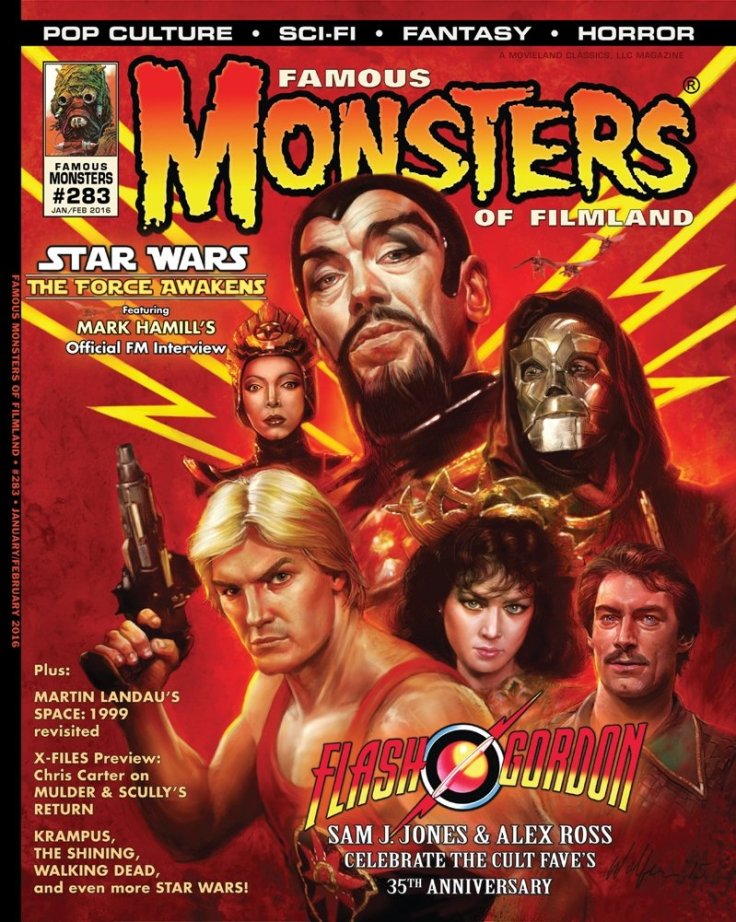
###
You made it to the end of the piece. Ah-aaaaah! Now, please take a moment to “like” IT CAME FROM… on Facebook and “follow” on Instagram and on Twitter and/or Tumblr for more great retro content.
Then, check out more of my celebrity and filmmaker interviews HERE.
______________________________________________________________________________
Writing and maintaining IT CAME FROM… is a true labor of love. Please consider showing your appreciation and help “keep the lights on” by donating a couple bucks with BUY ME A COFFEE. It’s quick and easy!
Thanks for your consideration…

